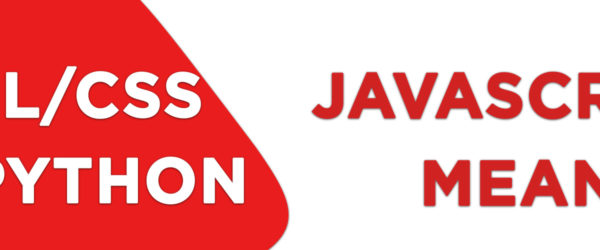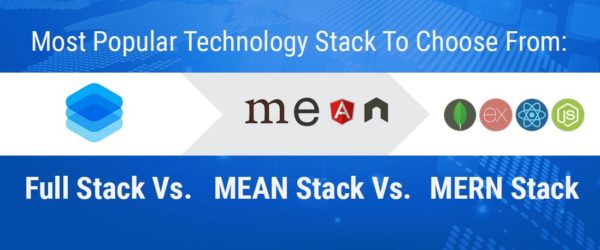Various endeavors have just embraced Kubernetes or become a Kubernetes relocation plan set up, clarifying that the stage is setting down deep roots. While it gives a ton of advantages to its clients, to exploit them, you have to completely read Kubernetes and whereby it functions underway. Commonly, the most troublesome components of Kubernetes are scholarly through experience taking care of true issues. This assignment will concentrate on giving assets to assist you with doing precisely that, while likewise clarifying a portion of the center ideas driving Kubernetes.
1. Administration Cluster
In the event that you need to begin someplace, learn Kubernetes group ideas. The significant cloud suppliers (AWS, Google, Azure, and so on.) all give Kubernetes bunches as a help. This is an extraordinary spot to begin. With only a few ticks in the cloud supports, you can make a group.
Moreover, the cloud suppliers deal with the group, performing routine assignments like authentication revolution and variant fixing. Assuming, in any case, you require to set up your Kubernetes groups, you’ll have to oversee everything yourself, creating the circumstance more perplexing.
Depicted underneath are a couple of the situations you may go over when overseeing groups all alone, just as certain assets that can assist you with getting increasingly capable at this procedure.
From Scratch Bootstrap Kubernetes
While you can without a very remarkable stretch use a Kubernetes bootstrapping instrument like kubeadm to set up gatherings, it’s basic to know how the pack is bootstrapped without any planning. In like way, you’ll have the alternative to deal with creation gives that may rise later on. The going with two sources explain this well:
- Kubernetes : The Hard Way on Bare Metal, Oahcran
- Kubernetes : The Hard Way, Kelsey Hightower
Using kubeadm to Bootstrap Kubernetes
Kubeadm preference naturally plays out the design you needed to do all alone in the past segment. Thus, it’s a quite famous device for bootstrap Kubernetes.
There remain, various models, to choose from, and, when your set up method, you’ll need to respond to addresses like, “Should the design be exceptionally accessible?” and, “Is a solitary ace bunch adequate?” Below are a couple of aides that will assist you with settling on these choices:
- Highly Available topology Options, Kubernetes Documentation
- Kubeadm Creating a single control-plane cluster, Kubernetes Documentation
- Kubernetes on CentOS 7 with Firewalld, Platformer Cloud, Nilesh Jayanandana
- Using Kubeadm, Demystifying High Availability in Kubernetes Velotio Technologies
- Adding Windows nodes, Kubernetes Documentation
Server Patching
You despite everything need to keep up groups after they are arranged. It’s suggested that you update Kubernetes forms when new stable adaptations are discharged, and these updates should be done steadily. At the end of the day, if your present rendition is 1.15, and the most recent adaptation is 1.18, you can’t refresh your servers straightforwardly to 1.18. The accompanying aides will assist you with updating Kubernetes with least interruption to your running outstanding burdens:
- kubeadm clusters Upgrading, Kubernetes Documentation
- Windows nodes Upgrading, Kubernetes Documentation
- Kubernetes Upgrade: Do-It-Yourself, The Definitive Guide, Platform9
Prevent Resource Overuse
At the point when you convey your remaining burdens in Kubernetes bunches, there’s an opportunity you’ll wind up abusing the group hub assets, a circumstance which can in the long run lead to framework crashes.
You can limit these dangers by learning Kubernetes unit cutoff points and asset quantities, forms that the accompanying assets tackle inside and out:
- Managing Compute Resources for Containers, Kubernetes Documentation
- Assigning Pods to Nodes, Kubernetes Documentation
- Configure Memory and CPU Quotas for a Namespace, Kubernetes Documentation
- Resource Quotas of Kubernetes, Alibaba Cloud
Backup and Restore
Each framework ought to have a reinforcement and reestablish plan set up, and Kubernetes is no exemption. The assets recorded beneath portray how to imagine and set up a powerful arrangement. Note that the ingenuity layer in Kubernetes is a key worth store called etcd.
- Backup Kubernetes – how and why (with examples for etcd), Elastisys
- Operating etcd clusters for Kubernetes, Kubernetes Documentation
- Creating etcd backup, CoreOS
2. Networking
Kubernetes organizing related issues are regular in misconfigured Kubernetes frameworks. Systems administration is a center layer in Kubernetes, and, from the get-go during the time spent bootstrapping a group, you have to settle on a choice about which compartment organizing interface (CNI) you need to use in your bunch.
Contingent upon the CNI you pick, you may access extra highlights like system strategy backing and encryption over the system. System strategy backing might be a basic necessity for you if you need to control entrance and departure traffic through your namespaces or units inside the Kubernetes group.
CNI Providers
Picking the right CNI relies upon your security arrangements, execution targets, and versatility, just as the equipment running in your server farm. These assets can assist you with selecting the best CNI for your utilization case:
- Container Network Interface (CNI) Providers, Rancher
- Comparing Kubernetes Networking Providers, Rancher
- Benchmark effects of Kubernetes network plugins (CNI) beyond 10Gbit/s network (Updated: April 2019), ITNextBenchmark effects of Kubernetes network plugins (CNI) beyond 10Gbit/s network
- Kubernetes Multi-Cluster Networking-Cilium Cluster Mesh, ITNext
- Flannel vs Calico : A battle of L2 vs L3 based networking, Shashank Jain
- Introducing Weave Net, Weaveworks
Network Policies
Kubernetes permits you to design organize approaches in the bunch arrange. These go about as a virtual firewall inside the bunch and permit you to adjust and control traffic among units and namespaces in Kubernetes.
So as to do this, you’ll have to design a system strategy bolstered CNI. The most well-known CNI utilized in instructional exercises, Flannel, doesn’t bolster organize approaches. The assets beneath look at the subtleties of working with organize strategies:
- Network Policies, Kubernetes Documentation
- Exploring Network Policies in Kubernetes, Banzai Cloud
- Secure Your Kubernetes Application With Network Policies, Bitnami
Service Discovery
Administration revelation in Kubernetes works with the part coredns, which requires your CNI to be arranged appropriately. Coredns gives different functionalities also, permitting you to arrange a wide cluster of DNS modules to suit your particular necessities.
- Debugging DNS Resolution, Kubernetes Documentation
- Customizing DNS Service, Kubernetes Documentation
- CoreDNS Plugins, CoreDNS
- How to Add Plugins to CoreDNS, CoreDNS
3. Kubernetes Storage
Kubernetes is a PaaS that permits you to run remaining tasks at hand as holders. As a rule, these remaining tasks at hand should endure in their state.
K8s bolsters a wide scope of capacity drivers locally, and the choice to utilize outer drivers exists too. While picking a capacity driver, you have to think about execution, volume gets to modes, accessibility, and versatility.
Kubernetes Volume Access Modes
Kubernetes bolsters three-volume get to modes: ReadOnly, ReadWriteMany, and ReadWriteOnly. Be cautious while picking the volume drivers, since some may not bolster every one of the three modes.
Numerous drivers don’t bolster ReadWriteMany. In any case, if ReadWriteMany mode is imperative to you, the most ordinarily utilized driver is NFS. More data about volume get to modes can be found at these connections:
- Persistent Volumes, Kubernetes Documentation
- Storage Classes, Kubernetes Documentation
- Dynamic Volume Provisioning, Kubernetes Documentation
- NFS Persistent Volumes with Kubernetes on GKE — A Case Study, Nilesh Jayanandana
- Kubernetes Storage: Rancher Longhorn vs OpenEBS vs Rook (Ceph) vs Robin vs StorageOS vs Portworx vs Linstor, Vito Botta
- Configuring NFS Storage for Kubernetes, Docker
- Using overlay mounts with Kubernetes, Amartey Pearson
Determined Volume Backup and Restore
Later you’ve provided capacity for Kubernetes, you have to learn Kubernetes reinforcement and reestablish convention. There are various instruments out there to help this, and some stockpiling drivers as of now have reinforcement frameworks actualized. Here are a couple of assets tending to potential arrangements:
- Kubernetes: Backup your Stateful apps, Maud Laurent
- Volume Snapshots, Kubernetes Documentation
- Kubernetes Snapshots and Backups, Portworx
- Stash by AppsCode, AppsCode
4. Discover Kubernetes Security
Regardless of whether your Kubernetes group is running on-prem or in the cloud, its security is of most extreme significance. A not well arranged Kubernetes group will be helpless against assaults.
As a dependable guideline, it’s ideal to abstain from uncovering the Kubernetes API to the general population to diminish the surface region of likely assaults.
Obviously, there are different approaches to assault a group and thusly to forestall those assaults, a considerable lot of which we depict here.
Service Accounts
Administration accounts are the assets related to Kubernetes’ validation system. They let you sign in and utilize the Kubernetes API. From that point, you can make different jobs with explicit consents stuck Kubernetes and tough situation these jobs to support accounts.
Most of the designers utilize the default kubectl config record from kubeadm as opposed to making a different client and a different config document for each kubectl client. In any case, this isn’t fitting since it may open up security vulnerabilities.
The assets beneath can assist you with exploring administration accounts:
- Kubernetes RBAC and TLS certificates – Kubernetes security guide (part 1), Sysdig
- Kubernetes components Securing: Kubernetes, kubelet etcd and Docker registry – Kubernetes security guide (part 3), Sysdig
- How to Secure Kubernetes Clusters from Pod to Network, Logz
- Using RBAC Authorization, Kubernetes Documentation
- OPA Gatekeeper: Policy and Governance for Kubernetes, Kubernetes Blog
Auditing, Kubernetes Documentation
Avoid Root Containers
It’s ideal to abstain from running holders in root mode. You can dodge compartments running as root utilizing the security settings accessible in Kubernetes and by utilizing holder sandboxing philosophies in case you’re running a multi-inhabitant framework in a solitary Kubernetes bunch. The assets beneath depict these procedures:
- Configure a Security Context for a Pod or Container, Kubernetes Documentation
- Pod Security Policies, Kubernetes Documentation
- Kubernetes security context, security policy, and network policy – Kubernetes security guide (part 2), Sysdig
- How to Implement Secure Containers Using Google’s gVisor, Karthikeyan Shanmugam
- Kata Firecracker VMM support and Kata Containers on Kubernetes, Gokul Chandra
User Federation
Various enterprises utilize Active Directory or some other instrument for the client the executives. At the point when you set up Kubernetes groups, you should combine clients to these bunches and design get to utilizing LDAP or SAML conventions. Here are a couple of aides that can assist you in beginning with this procedure:
- Single Sign-On for Kubernetes: An Introduction, The New Stack
- kube-oidc-proxy: A proxy to consistently authenticate to managed Kubernetes clusters, on multi-cloud, using OIDC, Jet Stack
- Role Based Access Control | Kubernetes Authentication in Rancher, Rancher
Entrance Traffic
Your Kubernetes bunch will quite often have a couple of administrations presented to the web. To have more power over your group’s entrance traffic, send it through an API entryway.
- Getting Started With Ambassador, DZone
- Kong Gateway in Kubernetes, ITNext
- Three Strategies for Managing APIs, Ingress, and the Edge with Kubernetes, ITNext
- API Gateway as an Ingress Controller for Amazon EKS, AWS
- Patterns for deploying Kubernetes APIs at scale with Apigee, Google Cloud
Protected Secrets
The insider facts you store in Kubernetes are simply base64 scrambled strings. Thusly, pretty much anybody can undoubtedly decode them. Lamentably, you can’t submit design documents to a store without presenting your privileged insights to outsiders.
The assets in this area give the best practices and devices to put away your delicate information in Kubernetes safely.
- Protecting Kubernetes Secrets: A Practical Guide, AquaSec
- Injecting Vault Secrets Into Kubernetes Pods via a Sidecar, Vault
- Managing secrets deployment in Kubernetes using Sealed Secrets, AWS
- Encrypting Secret Data at Rest, Kubernetes Blog
- Securely Keeping Kubernetes Secrets in Git, VictorOps
- Secrets Management of Kubernetes, DZone
- Securing Secrets With Logz.io and HashiCorp Vault Security Analytics, Logz
Best Practices Kubernetes Security
A great deal of surety executions is required to make sure about your Kubernetes bunch. This present area’s assets clarify best practices for Kubernetes groups.
Make sure to consistently check and benchmark your Kubernetes bunch to ensure that it fulfills the security guidelines determined by your association.
- Best Practices Kubernetes Security, Logz
- Find Safety Vulnerabilities in Kubernetes Clusters, Rancher
- Best practices of the top Kubernetes security, Sqreen Blog
- Hardening your cluster’s security, Google Cloud
- 9 Kubernetes Security Best Practices Everyone Must Follow, CNCF
- K8s security guide, Sysdig
- Kube-hunter – an open source tool for Kubernetes penetration testing, AquaSec
- Kubernetes Audit: Making Log Auditing a Viable Practice Again, CNCF
- Kubernetes Audit Logging, Sysdig
Kubernetes Surveillance
Logging and checking (measurements) complete the arrangement of your creation grade Kubernetes bunch.
Measurements, otherwise called checking (however the term can some of the time be found reaching out to different parts of discernibleness) permits you to watch and follow up on bunch conduct after some time. Simultaneously, logging lets you investigate running remaining tasks at hand and watch their status.
Monitoring
There are many observing stacks, yet the most well known join Prometheus with Grafana and additionally the Elastic Stack. Both give comparable highlights (however Grafana is structured in view of measurements; Elastic with attention on logs).
Luckily, in case you’re utilizing a cloud-oversaw Kubernetes arrangement, your cloud merchant will have a committed checking stack accessible to you. For instance, GKE utilizes Stackdriver.
The following are a couple of aides portraying how to set up checking in Kubernetes:
- Kubernetes Monitoring: Best Practices, Methods, and Solutions, Logz
- Kubernetes Monitoring with Prometheus -The ultimate guide (part 1), Sysdig
- Kubernetes Monitoring with Prometheus: Grafana, AlertManager, PushGateway (part 2), Sysdig
- Kubernetes monitoring with Prometheus – Prometheus operator tutorial (part 3), Sysdig
- Configure Liveness, Readiness and Startup Probes, Kubernetes Documentation
- Kubernetes Monitoring, Elastic Stack
Logging
Holders are stateless. Logs are gushed to standard out, and log records are spared in the holder motor log envelope in the host working framework.
In any case, searching for these logs physically is extraordinarily dreary, so logs are regularly amassed and pushed to a unified logging supplier where clients can undoubtedly investigate them. The accompanying rundown of connections should assist you in exploring the subtleties of logging:
- An Introduction to Kubernetes Logging, Logz
- Logging Architecture, Kubernetes Documentation
- Logging Using Elasticsearch and Kibana, Kubernetes Documentation
- Monitor and Troubleshoot Your IT Environment, Logz
- An Insider’s Guide to Splunk on Containers and Kubernetes, Splunk
- Fluentd vs. Logstash: A Comparison of Log Collectors, Logz
- How To Set Up an Elasticsearch, Fluentd and Kibana (EFK) Logging Stack on Kubernetes, Hanif Jetha
Tracing
In a microservice domain, where you have hundreds if not a large number of microservices running, investigating gets entangled. Every one of your solicitations bounces off these microservices to finish one business space demand in your application.
Following deals with this multifaceted nature by observing and breaking down solicitation payloads and solicitation bounces between your administrations, permitting you to get a more clear image of how your administrations are running in your condition.
- Top 11 Open Source Monitoring Tools for Kubernetes, Logz
- Jaeger Operator for Kubernetes – JaegerTracing, Jaeger
- Using Kubernetes Pod Metadata to Improve Zipkin Traces, SoundCloud
- Zipkin or Jaeger? The Best Open Source Tools for Distributed Tracing, Epsagon
- When Istio Meets Jaeger – An Example of End-to-end Distributed Tracing.md, Stevenc81
- A guide to distributed tracing with Linkerd, Linkerd
- Distributed Tracing with Java “MicroDonuts”, Kubernetes and the Ambassador API Gateway, Ambassador
Conclusion
Beginning with Kubernetes is simple; doing things the correct way requires practice. To ace it completely, you have to have hands-on experience utilizing it to take care of certifiable issues.
Once in a while, you need a little direction from a specialist on where to begin looking and how to get moving. There are a variety of assessments out there concerning how to best accomplish the results we talked about above. All things considered, we’ve attempted to give an assortment of probably the best assets to assist you with figuring out them. The assets in this post have been accumulated to provide you with that underlying course.
It’s dependent upon you to jump into these articles and construct a Kubernetes methodology that suits your necessities and requirements. With a brief period and exertion, you, as well, can be an expert Kubernetes manager!





